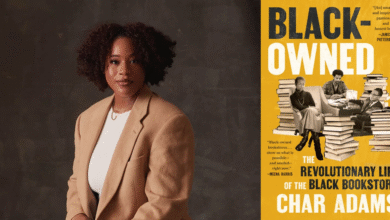John U. Bacon on ‘The Gales of November’ and the Edmund Fitzgerald

It’s a ship that became legend in the Great Lakes, and was immortalized in song: the Edmund Fitzgerald, the mammoth ore freighter that met its demise in Lake Superior on Nov. 10, 1975.
Michigan-based bestselling author John U. Bacon takes a deep dive into this legend in his new book, The Gales of November: The Untold Story of the Edmund Fitzgerald, released last week by W.W. Norton’s Liveright imprint ahead of the disaster’s 50th anniversary.
The ship sank in 30-foot seas fueled by a howling storm above relatively warm water, killing all 29 men aboard – a tragedy made famous by Gordon Lightfoot’s 1976 hit song, “The Wreck of the Edmund Fitzgerald.”
He spoke with us ahead of a visit to Milwaukee – the home base of the Fitzgerald, which was commissioned by Northwestern Mutual Life Insurance Co. – for a talk at Boswell Book Co.
Q. You describe the 729-foot-long Edmund Fitzgerald as “the biggest, best and most profitable ship” on the Great Lakes before it sank. Besides the mystery of what happened, why is that tragedy so compelling to people?
A. A few things. One, without question, the song. From 1875 to 1975, there were 6,000 commercial shipwrecks on the Great Lakes, costing 30,000 lives. And yet, I’m willing to bet that the vast majority of us, even those of us on the Great Lakes, can probably name one. But also, since 1975, there’s not been a single commercial shipwreck on the Great Lakes, which is hard to believe. That’s largely because of the reforms enacted from this one.
The Unity Awards celebrates people and organizations who are working to make Milwaukee a better place for all. Know someone who should be honored?
Q. How well does Lightfoot’s song capture what happened?
A. It is like 98% accurate. Even when he found out his data was a bit wrong, he would change the lyrics – not in the original song, but in all the concert playings of it. That’s how committed Lightfoot was to accuracy.
Q. Many books have been written about the Edmund Fitzgerald. What does yours reveal?
A. I got to almost half the families and six former crew members who were on the ship at some point, who have never talked to any authors before. So the family members and the crew give you a whole different perspective on what happened and make it more human and, frankly, more heartbreaking.

Q. The storm had 100 mph winds and 50-foot waves, but were mistakes made, too?
A. Mistakes were made in the construction of the ship itself. It was far more flexible than other ships because they emphasized welds over rivets. Rivets are more stable, but they weigh more, and they’re slower, and they cost more. So, welding seems like a better deal all the way around, but it might cost you. Then, the government and the Coast Guard dramatically relaxed cargo limits on the Fitzgerald, giving it 3½ more feet to sink down in the water. It was not built for that. So now you’re asking the ship to do things it was not designed to do.
And then, some well-intentioned decisions that backfired badly. The biggest one being the decision to take the northern route, which is supposed to give you a lot more protection from the wind and the waves. And it does. But it also costs you 14 hours. And that gives the storm a 14-hour head start.
Q. Milwaukee Magazine will publish in its November issue an excerpt from your book, focusing on the Edmund Fitzgerald’s connection to Milwaukee – how the ship was owned by Northwestern Mutual and named for its president. So there’ll be more to say there. But what was Fitzgerald’s connection to shipping?
A. Fitzgerald’s grandfather and his grandfather’s five brothers were all captains on the Great Lakes. That is an insane stat. They have to be the most shipping family in all the Great Lakes.
Q. In telling about the 29 men who died, what’s one story that stays with you?

A. Eddie Bindon. He goes to Duluth that weekend, his last day on shore, and buys a 25th anniversary diamond ring for his wife [Helen] and then he gives it to a friend to mail to her instead of just taking it on board. Why do you do that? Who can say? Only Eddie Bindon knows. But she put the ring on her finger, she wore it the rest of her life and she never remarried. So, that’s one of those stories of heartbreak, but it’s also touching.
Q. What do you hope stays with readers of your book?
A. To understand how big the Great Lakes are, how dangerous they are. How important shipping is. I mean, the cement in your basement, the steel in your car and the food on your table all come from these ships. These guys are unsung heroes.
John Bacon will talk about The Gales of November at 6:30 p.m. Oct. 17 at Boswell Book Co., 2559 N. Downer Ave.





